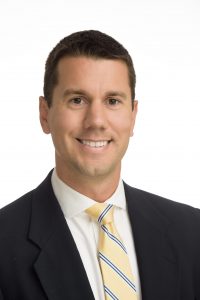Eric Chaconas named new DScPT program director
 Dr. Eric Chaconas has been named the new Doctor of Science in Physical Therapy program director at Bellin College. The college recently expanded its offerings in collaboration with Evidence in Motion to include post-graduate physical therapy programs.
Dr. Eric Chaconas has been named the new Doctor of Science in Physical Therapy program director at Bellin College. The college recently expanded its offerings in collaboration with Evidence in Motion to include post-graduate physical therapy programs.
“It’s an absolute honor to join such a high-performing team,” Chaconas said. “The people that make up this program, Bellin College, Evidence in Motion and Bellin Health are the reason I pursued this position. Everyone I have interacted with is intrinsically driven to provide a premier post-professional educational experience for physical therapists.”
The DScPT degree program expands on the knowledge, skills, and abilities obtained from the fellowship certificate with an emphasis on research, educational leadership and advanced practice. Students may choose to complete only the fellowship component or may choose to continue to complete the DScPT degree. Successful completion of an orthopaedic manual physical therapy fellowship is required to complete the DScPT program.
“Our profession really needs a program like this to meet the growing demand for teaching and research faculty in the physical therapy profession,” Chaconas said. “We need more physical therapists trained at the Fellowship and Doctor of Science level to advance research and teach in our physical therapy programs throughout the United States.”
Chaconas practiced physical therapy while continuing his education to become a doctor of physical therapy. He has taught at many levels, most recently as an associate professor at the University of St. Augustine for Health Sciences.
“Bellin College is truly a center of excellence, partnered with one of the highest performing health systems in the United States in Bellin Health and then Evidence in Motion which is the premier educational company in the physical therapy profession,” he said. “This DScPT program is in the perfect position to bring together the absolute best from the clinical, educational and research aspects of our industry.”

